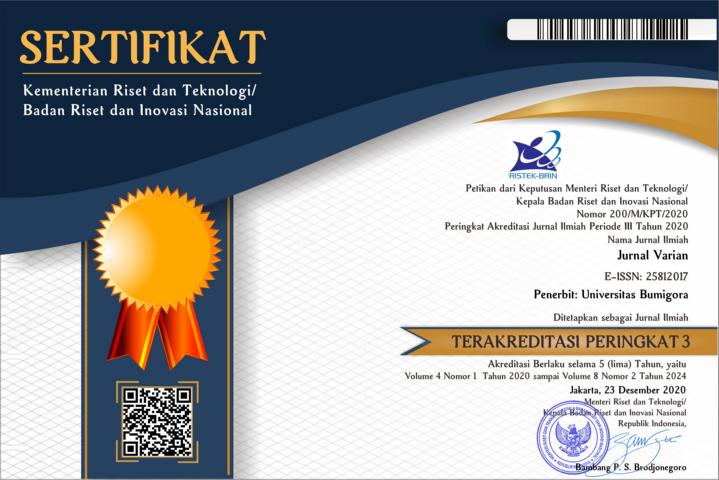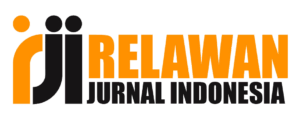Forecasting Foreign Tourist Visits to West Nusa Tenggara Using ARIMA Method
Abstract
West Nusa Tenggara (NTB) is one of the provinces in Indonesia that has its own charm in the world of tourism and is known as a pioneer of halal tourism. In addition to domestic tourists, NTB tourism always has an attraction for foreign tourists. This is evidenced by the increasing number of foreign tourists visiting NTB from year to year before the Covid-19 pandemic. This condition certainly has a positive impact on increasing NTB’s economic growth in the tourism sector and indirectly on the optimization of existing infrastructure. The purpose of the study is to predict the number of foreign tourist visits to NTB so that it can assist the government in making decisions in preparing adequate facilities and infrastructure in the event of a surge in tourist visits. The method used in this study is the Box-Jenkins-ARIMA model. The ARIMA method is based on 3 models that are formed from the results of plot data. The data used in this study is secondary data sourced from the Central Statistics Agency (BPS) of West Nusa Tenggara (NTB), from January 2010 to June 2019. The results show that the ARIMA (4,1,1) model is the most widely used model. This model is suitable for predicting the number of foreign tourists visiting NTB because this model produces the lowest SSE and MSE values compared to other models.
References
7(1).
Arini, P. S. and Nawangsih, E. (2015). Peramalan Jumlah Kunjungan Wisatawan Mancanegara (Wisman) ke Bali Tahun 2019:
Metode ARIMA. Jurnal Ekonomi Kuantitatif Terapan, 8(2):136–141.
Chuang, A. and Wei, W. W. S. (1991). Time Series Analysis: Univariate and Multivariate Methods.
City, S., Tahir, H. A., Ahmed, R. A., and Mhamad, A. J. (2019). Forecasting for the Imported Weight of Equipment to Cargo of
Sulaimani International Airport. sjcus, 3(1):62–82.
Didiharyono, D. and Bakhtiar, B. (2018). Forecasting Model With Box-Jenkins Method To Predict Tourists Who Visit Tourism
Place In Toraja. Jurnal of Economic, Management and Accounting, 1(1):34–41.
Didiharyono, D. and Syukri, M. (2020). Forecasting With Arima Model in Anticipating Open Unemployment Rates in South
Sulawesi. International Journal of Scientific and Technology Research, 9(3):3838–3841.
Eni, D. and Adeyeye, F. J. (2015). Seasonal ARIMA Modeling and Forecasting of Rainfall in Warri Town, Nigeria. Journal of
Geoscience and Environment Protection, 03(06):91–98.
Fahmeyzan, D., Soraya, S., Etmy, D., and Mataram, S. B. (2018). Uji Normalitas Data Omzet Bulanan Pelaku Ekonomi Mikro
Desa Senggigi dengan Menggunakan Skewness dan Kurtosis. Jurnal Varian, 2(1):31–36.
Hendayanti, N. P. N. and Nurhidayati, M. (2020). Perbandingan Metode Seasonal Autoregressive Integrated Moving Average
(SARIMA) dengan Support Vector Regression (SVR) dalam Memprediksi Jumlah Kunjungan Wisatawan Mancanegara ke Bali.
Jurnal Varian, 3(2):149–162.
Li, W. and Zhang, Z. G. (2009). Based on Time Sequence of ARIMA Model in The Application of Short-Term Electricity Load
Forecasting. ICRCCS 2009 - 2009 International Conference on Research Challenges in Computer Science, pages 11–14.
Nguyen, A. T. (2020). The Relationship between Tourism and Economic Growth: Evidence from Oceania. Journal of Tourism
Management Research, 7(1):32–41.
Rizal, A. A., Soraya, S., and Tajuddin, M. (2019). Sequence to Sequence Analysis with Long Short Term Memory for Tourist
Arrivals Prediction. Journal of Physics: Conference Series, 1211(1).
Series, C. (2020). Self-Identification Deep Learning ARIMA Self-Identification Deep Learning ARIMA. Journal of Physics:
Conference Series, 1564.
Setiawan, Santi Puteri Rahayu, S. S. (2017). Economic Growth Modelling In East Java Using Bayesian. Teknomatika, 07(02):57–69.
Waluyo, J. E. (2019). Peramalan Kedatangan Wisatawan Manca Negara Melalui Bandara Husein Sastra Negara Bandung Dengan
Menggunakan Metode Arima (Autoregressive Integreted Moving Average). Jurnal Kepariwisataan: Destinasi, Hospitalitas dan
Perjalanan, 3(1):18–26.
Zhang, Y., Luo, L., Yang, J., Liu, D., Kong, R., and Feng, Y. (2019). A Hybrid ARIMA-SVR Approach for Forecasting Emergency
Patient Flow. Journal of Ambient Intelligence and Humanized Computing, 10(8):3315–3323.

This work is licensed under a Creative Commons Attribution 4.0 International License.


















